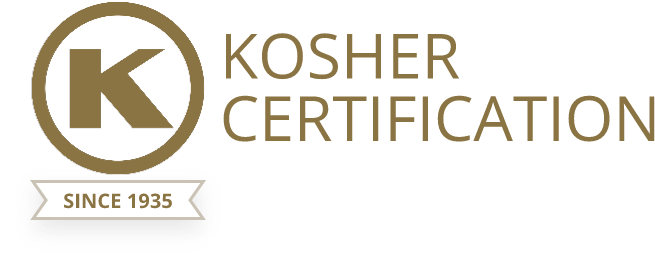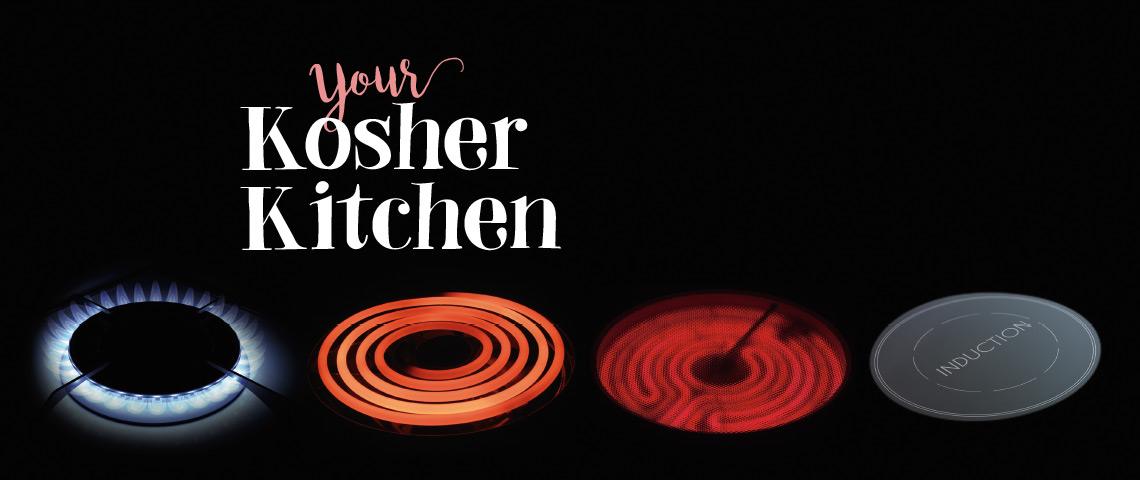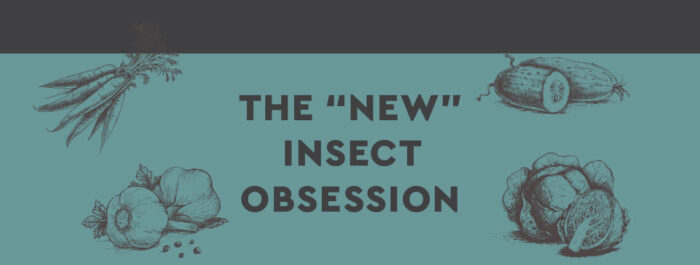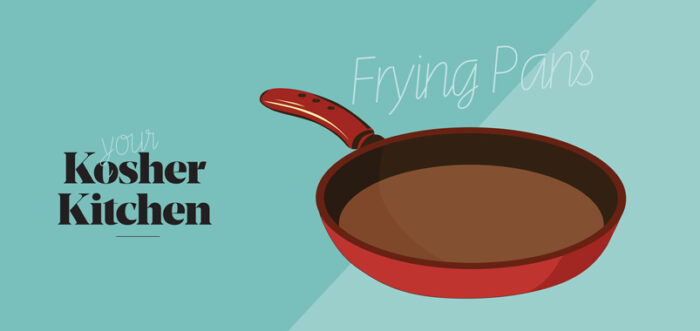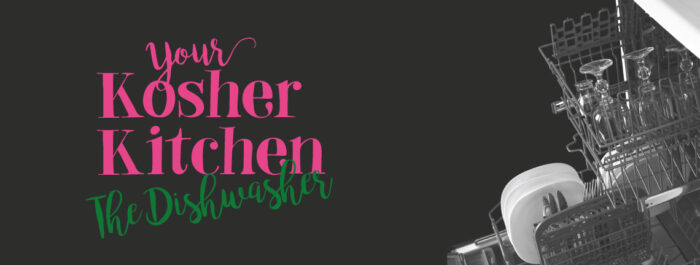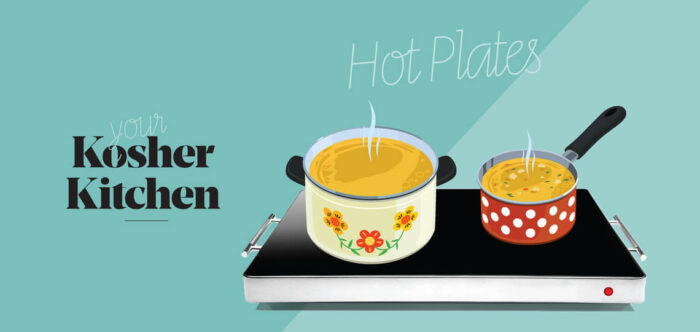Common Stovetop Kashrus Questions:
1. How do I kasher the stovetop?
2. Do I need to designate the grates for dairy and meat?
3. Can I have a pot of dairy and a pot of meat cooking at the same time?
4. How can I kasher for Pesach? (Pesach will be discussed in a future issue.)
The 4 common stovetop types in home kitchens are: gas, electric, glass top and induction. Each type has its own considerations; however, before we begin we need to understand a basic concept in Halacha. In order for taste to transfer it needs a medium, either the food itself can touch a surface (pot) or 2 pots are next to each other and there is a liquid in between that can cause the taste to transfer1 . Therefore, if one has a covered pot of milk on one burner and a covered pot of meatballs on the burner next to it, and they are touching each other, but there is no liquid medium, then everything is kosher (assuming there is no splattering). Now let’s go to our discussion. In all of these examples, one is required to make sure the area is clean (no food residue). We are also assuming that all food is in pots and not directly on the cooktop.
I. Gas Cooktop With Grates
- If one has grates from a gas stovetop that came from a non-kosher environment then one should kasher l’chumra.2 The easiest way is to put the grates in a self-cleaning oven and run the self-clean cycle. If one does not have a self-cleaning oven, then one can cover the stovetop with a blech or (loosely with) aluminum foil and turn on the burners to “high” for 15 minutes; this will create enough heat for kashering. Be careful not to have all 4 burners on at once when using aluminum foil as it can cause excessive damage, including breaking the oven. The flat part in between the grates should be kashered by pouring boiling water over it.
- One is not required to designate separate grates for dairy and meat.3 There are some who are more stringent and require designated grates.4
- One may have pots of dairy and meat cooking at the same time provided that there is no splattering or mixing (including steam) from one to the other. Since it is difficult to meet the required conditions, it is not advisable to cook meat and dairy at the same time.
II. Electric Cooktop With Coils That Double As Grates
- The electric coils get red-hot and are self-kashering each time they are turned on. The flat part in between the grates should be kashered by pouring boiling water over it.
- There is no need to designate separate dairy and meat burners since the coils are self-kashering each time they are turned on.
- As with a gas stovetop, one may have pots of dairy and meat cooking at the same time provided that there is no splattering or mixing (including steam) from one to the other. Since it is difficult to meet the required conditions, it is not advisable to cook meat and dairy at the same time.
III. Flat Glass (Smooth Cooktop)
- The area directly over the burner (within the circle of heat) does not require any kashering. However, many times the pot is larger than the circle and if something spills then it would transfer taste and, therefore, requires kashering. One should turn on all of the elements to the highest heat and heat up a pot of water. The boiling water should be poured over the heat elements so that it spills onto the rest of the glass top, which effectively makes a hagalah with even meluban (hot stone).
- As mentioned, many times the pot is larger than the circle of fire and there can be spillage, therefore one should designate separate burners for dairy or meat to avoid complications.
- One may have pots of dairy and meat cooking at the same time provided that there is no splattering or mixing (including steam) from one to the other. Since it is difficult to meet the required conditions, it is not advisable to cook meat and dairy at the same time.
IV. Induction (Glass Cooktop With Electromagnetic Elements)
- If one has an induction cooktop that was previously used for non-kosher, one can either kasher with boiling water or one can buy an induction interface disc. This disc would serve as a barrier between the non-kosher surface and your pot.
- One of the features of induction cooking is that the element stays cool to the touch, so unlike the other cooktops this one would not kasher itself. Therefore, one should designate separate burners for dairy or meat; alternatively, one can purchase two sets of induction interface discs – one set for meat and one set for dairy.
- One may have pots of dairy and meat cooking at the same time provided that there is no splattering or mixing (including steam) from one to the other. Since it is difficult to meet the required conditions, it is not advisable to cook meat and dairy at the same time.
1. Rema YD 92:8, Shach YD 105:22
2. Igros Moshe YD 1:59
3. Igros Moshe OC 1:124, YD 1:40, YD 1:59
4. Minchas Yitzchok 5:20


 EN
EN  ZH
ZH  KR
KR  BR
BR  ES
ES  IN
IN  IL
IL 